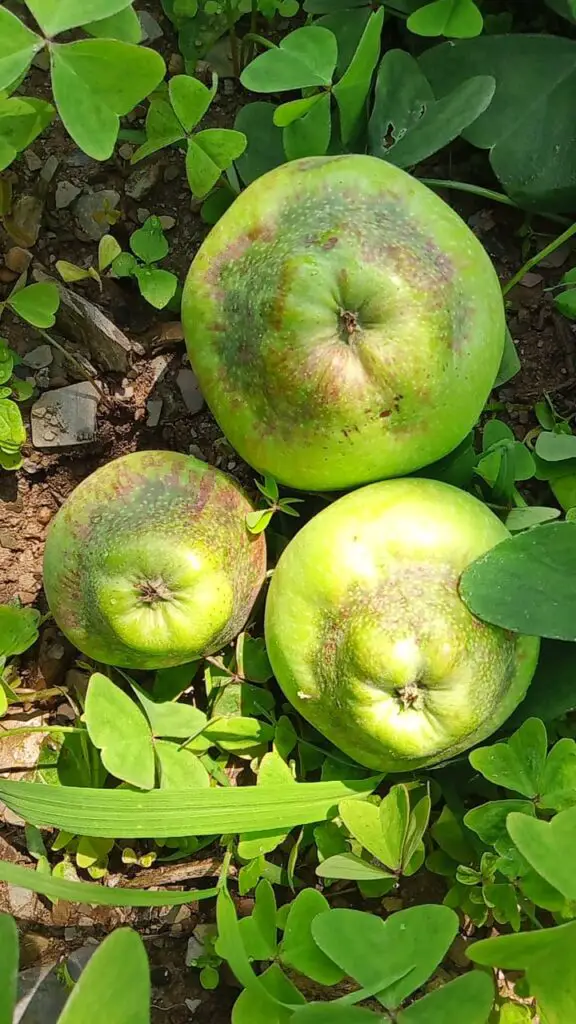Introduction
It’s a beautiful day and you are taking a leisurely stroll through your apple orchard, appreciating the beautiful, ripening fruits. Then, to your dismay, you notice that a sizable number of apples exhibit a darkened, decayed area around the calyx. This indeed is a classic symptom of a common physiological disorder known as Calyx end rot in apples. This blog aims to better understand, identify, and manage Calyx end rot, ensuring your apples stay healthy and profitable.

What is Calyx End Rot?
Calyx end rot is a physiological disorder that predominantly affects apples, and it refers to the decay that occurs at the calyx end, i.e., the bottom end of the apple opposite the stem. This is not a disease caused by pathogens but a disorder related to the apple’s nutritional imbalances, especially calcium deficiency.
Symptoms and Identification
The first signs of calyx end rot generally appear when the apple is half-grown. The tissue at the calyx end of the apple becomes brown or black and takes on a leathery texture. The affected area may stay small or enlarge to take up most of the apple’s bottom. As the disorder progresses, the decayed tissue dries and sometimes collapses, resulting in a sunken calyx end. In worse scenarios, secondary infections by opportunistic pathogens like Penicillium or Colletotrichum fungi can occur, exacerbating rot and prompting the presence of spores or a musty smell.
Causes of Calyx End Rot
Despite the disorder being linked to calcium deficiency, it’s often not due to low soil calcium levels but rather the ineffective transportation of calcium to the fruit. High nitrogen levels, inadequate water supply, or excessively large fruits can hamper calcium uptake, causing a disproportion between calcium and other nutrients that exacerbates the disorder.
Prevention and Management
Calyx end rot can be controlled significantly with a combined approach of good agricultural practices and calcium supplementation.
- Balanced Fertilization: Ensuring a balanced supply of nutrients can help prevent the disorder. Avoid supplying excessive nitrogen which exacerbates calcium deficiencies in the fruits.
- Efficient Water Management: Keeping a consistent soil moisture level ensures the regular uptake and distribution of calcium. Avoid water stress conditions and ensure the water supply is evenly distributed.
- Pruning and Thinning: Reducing the crop load can ensure better calcium distribution to all fruits. Proper pruning ensures increased light penetration and air circulation, promoting overall tree health.
- Foliar Calcium Sprays: Regular application directly to the fruits during the growing season can help bolster calcium levels, thus minimizing the risk of calyx end rot.
Conclusion
While Calyx end rot is a common occurrence in apple orchards, understanding its causes and symptoms can help apply effective preventative and management strategies. With balanced fertilization, proper water management, and adequate calcium supplementation, the incidences of calyx end rot can be massively reduced, leading to a healthier, more profitable orchard.



